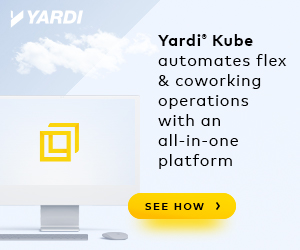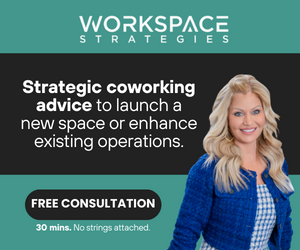- Utilizing high-quality audio and video tech in hybrid meetings significantly improves trust, expressiveness, and perceived contribution quality among participants.
- To achieve meeting equity, it’s essential to give every participant equal “pixel real estate” and presence, irrespective of their physical location, driving inclusivity and diversity of perspectives.
- Advancements like augmented and virtual reality could revolutionize virtual interactions, offering immersive experiences that mimic physical presence and elevate collaboration and engagement.
The hybrid model is now the norm, and it’s clear that the essence of human connection in the workplace is undergoing a profound change.
In my recent conversation with Paul Sephton, Head of Brand Communications at Jabra, we discussed a pioneering study that unveils critical insights into this evolving dynamic. Conducted in collaboration with the London School of Economics, this research reveals how technology mediates our interactions in a hybrid setting, offering a blueprint for fostering trust and connection in a landscape where physical presence is no longer a constant.
The Technological Catalyst for Trust
The study’s revelation about the impact of technology quality on trust dynamics within hybrid meetings is a clarion call for a reevaluation of our digital interaction tools. The usage of professional-grade video and audio equipment transcends mere enhancements in clarity and engagement; it fundamentally alters the fabric of interpersonal relationships in the virtual workspace.
The perceived contribution quality from all involved jumped by 47% when high-quality equipment was uniformly employed, in stark contrast to scenarios utilizing a standard video bar and the built-in audio of a laptop.
This nuanced understanding of technology as a trust catalyst challenges the traditional model that equates physical presence with the pinnacle of trust-building.
Examining the aggregate feedback from all meeting attendees, there was a notable enhancement in the technology experience’s overall clarity, showing a 27% improvement. Trust levels among participants saw a 16% uptick, while expressiveness surged by 35%.
This nuanced understanding of technology as a trust catalyst challenges the traditional model that equates physical presence with the pinnacle of trust-building. Instead, it posits that with meticulously chosen technological enhancements, virtual meetings have the potential not only to mirror, but to amplify the depth and authenticity of face-to-face interactions.
The implications of this are far-reaching.
Consider the subtle cues of nonverbal communication—gestures, facial expressions, and the timbre of a voice—each a crucial element in trust-building. High-fidelity audio and crisp, clear video bring these nuances to the forefront in virtual settings, bridging distances and fostering an environment where trust can flourish.
This technological empowerment enables a level of expressiveness and mutual understanding that was previously the exclusive domain of in-person interactions, marking a significant leap forward in how we conceive of trust in the digital age.
Navigating Communication in a Hybrid World
The insights in this study serve as a cornerstone for a strategic approach to communication within the hybrid work model, underscoring the pivotal role of technological quality. This is not merely about the transmission of sound and image; it’s about enhancing the sensory fidelity of our virtual interactions to such a degree that they resonate with the immediacy and intimacy of direct, in-person exchanges.
This approach is encapsulated in a broader communication framework that I’ve advocated for my clients to use for hybrid work, which categorizes communication into three distinct tiers, each evaluated on its potential for trust-building against the backdrop of logistical implications.
The top tier, characterized by in-person and synchronous interactions, has traditionally been viewed as the most conducive to trust-building. However, the study’s findings challenge us to expand this framework, recognizing that with the right technological support, virtual synchronous communication can achieve a level of trust-building efficacy that rivals, and in certain dimensions, surpasses, that of in-person engagements.
It’s about transcending the physical limitations of space and creating a digital environment where every conversation, every meeting, becomes a conduit for deepening trust and fostering robust professional relationships.
This shift calls for a strategic reimagining of our communication practices, urging us to invest in and prioritize technological solutions that elevate the quality of our virtual interactions.
It’s about transcending the physical limitations of space and creating a digital environment where every conversation, every meeting, becomes a conduit for deepening trust and fostering robust professional relationships.
Redefining Meeting Equity in the Hybrid Space
The practical ramifications of these insights are particularly pronounced in the realm of hybrid meetings, where as Sephton highlights, the concept of “pixel real estate” emerges as a foundational principle for equitable and inclusive communication.
This principle advocates for a meeting environment where every participant, irrespective of their physical location, is afforded equal visibility and presence. This is a radical departure from traditional meeting formats, where remote participants often find themselves relegated to the periphery of the conversation, struggling for visibility and voice amidst their in-person counterparts.
To actualize this vision of meeting equity, a reevaluation of our meeting norms is imperative. The adoption of individual video feeds for each participant, for instance, ensures that the digital space is as vibrant and engaging as the physical boardroom. This not only democratizes participation but also enriches the meeting discourse, ensuring that diverse perspectives are seen and heard.
Such practices, underpinned by high-quality technological support, dismantle the barriers that have traditionally segmented participants based on their mode of attendance, fostering a truly inclusive meeting culture.
This expanded understanding and application of technology within hybrid meetings not only redefine the parameters of engagement and inclusivity but also pave the way for a more connected, trust-rich professional landscape.
As we navigate this hybrid world, the thoughtful integration of technology in our communication practices emerges not just as a logistical necessity but as a strategic imperative, one that holds the key to unlocking deeper, more meaningful connections in the digital age.
The Technological Horizon
During the conversation with Sephton, the potential of augmented and virtual reality technologies in redefining meeting engagement became increasingly apparent. These technologies promise a future where the sensory limitations of traditional video conferencing are overcome, offering a level of immersion and interaction that closely mirrors physical presence.
Imagine a meeting where augmented reality overlays provide real-time data and insights, or where virtual reality transports participants to a shared digital space, enabling a level of collaboration and engagement previously unimaginable.
Such advancements have the potential to transform mundane conference calls into dynamic, interactive sessions that captivate participants and foster a deeper level of collaboration and understanding.
This vision of augmented meetings represents a seismic shift in how we perceive and conduct virtual interactions. It suggests a future where technology not only facilitates communication but also enhances it, adding layers of richness and depth to the meeting experience.
Such advancements have the potential to transform mundane conference calls into dynamic, interactive sessions that captivate participants and foster a deeper level of collaboration and understanding.
The Intersection of Technology and Leadership
In this evolving landscape, the role of leadership is more critical than ever. Leaders are tasked with navigating this transition, embracing technological advancements not as mere tools but as integral components of our communication infrastructure.
This requires a forward-thinking mindset, one that views these changes not as compromises but as opportunities to enhance the natural connectivity that underpins effective teamwork and collaboration.
Leaders must possess a nuanced understanding of the technologies at their disposal, discerning which tools and practices will best serve their teams’ needs. Moreover, they must be willing to challenge and reimagine traditional norms, advocating for innovative approaches that align with the demands of a hybrid work environment.
By fostering a culture that values adaptability and innovation, leaders can guide their teams through this transition, ensuring that the organization remains at the forefront of the hybrid work revolution.
The Ethical and Empathetic Use of Technology
A The integration of advanced technologies into our work practices must be undertaken with a deep respect for individual privacy and autonomy.
As we embrace these new technological models, we must also remain vigilant about the ethical implications of their use. The integration of advanced technologies into our work practices must be undertaken with a deep respect for individual privacy and autonomy.
It is imperative that these tools are employed to enhance human interaction, not to surveil or diminish the individual.
Leaders and organizations must establish clear guidelines and ethical standards for the use of technology, ensuring that it serves to empower and uplift rather than to control or marginalize. This includes being transparent about data collection and usage, respecting user consent, and prioritizing security and privacy in every aspect of technology deployment.
Adhering to these principles ensures that our reliance on technology strengthens, rather than undermines, the fabric of trust and mutual respect that binds our teams together.
Embracing the Hybrid Future
The insights from my conversation with Paul Sephton offer a compelling narrative on the evolving nature of trust and connection in the hybrid workplace. They underscore the pivotal role of technology in bridging the gap between the physical and digital realms, offering a new standard for human interaction in the professional sphere.
As we navigate this complex landscape, let us embrace these technological advancements with a sense of purpose and optimism, recognizing their potential to enrich our professional lives and deepen our connections with one another.
In this hybrid future, our ability to adapt, innovate, and connect will define the quality of our professional relationships and, by extension, the success of our collective endeavors.

 Dr. Gleb Tsipursky – The Office Whisperer
Dr. Gleb Tsipursky – The Office Whisperer Cat Johnson – Coworking Marketing Maven
Cat Johnson – Coworking Marketing Maven Angela Howard – Culture Expert
Angela Howard – Culture Expert Drew Jones – Design & Innovation
Drew Jones – Design & Innovation Andrea Pirrotti-Dranchak – Competitive Advantage
Andrea Pirrotti-Dranchak – Competitive Advantage Jonathan Price – CRE & Flex Expert
Jonathan Price – CRE & Flex Expert Jeremy Fennema – Tech Innovation Alchemist
Jeremy Fennema – Tech Innovation Alchemist







